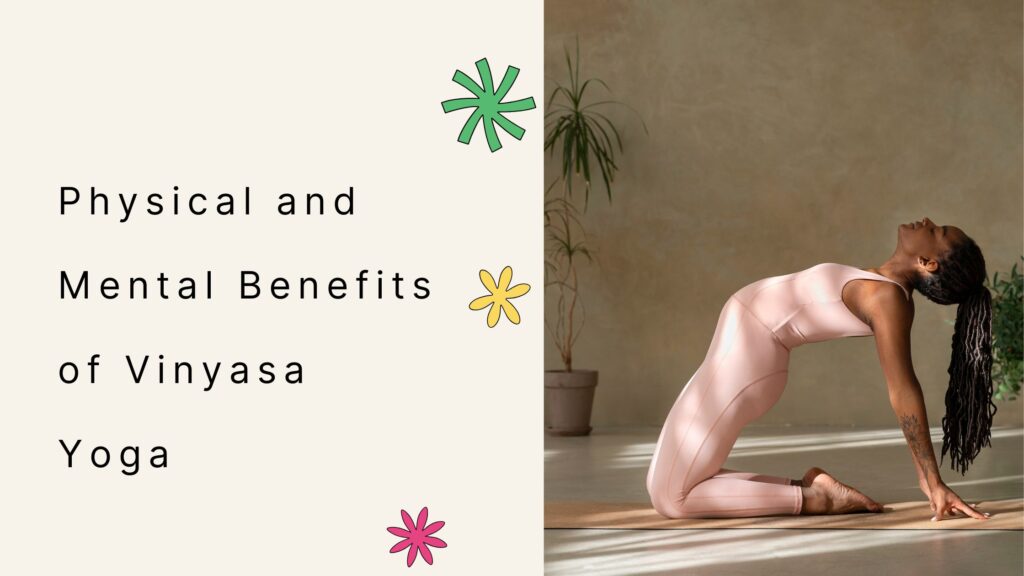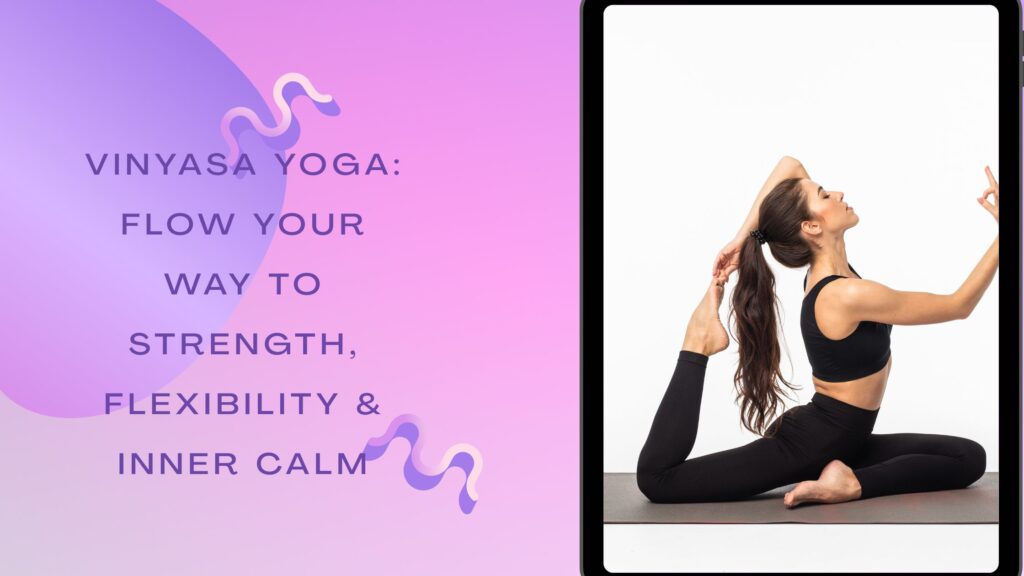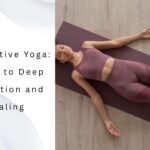In today’s fast-paced world, finding a practice that nurtures both your body and mind is more valuable than ever. Vinyasa yoga—a dynamic, flowing style of yoga—is one of the most popular and transformative practices out there. But what exactly is Vinyasa yoga, and why is it the go-to style for so many yogis around the globe?
Whether you’re looking to boost your strength, improve flexibility, relieve stress, or create a deeper connection with yourself, Vinyasa yoga offers a powerful and accessible path. In this comprehensive guide, we’ll explore everything you need to know about Vinyasa yoga—from its origins and core principles to its incredible physical and mental benefits.
Vinyasa yoga, often referred to as flow yoga, is a dynamic style that links breath with movement to create a continuous, fluid practice. This form of yoga provides a range of benefits, such as enhanced flexibility, increased strength, better cardiovascular health, and stress relief. Known for its seamless sequence of poses, Vinyasa yoga is ideal for individuals looking for both a physically engaging workout and a mindful connection between body and mind.
Table of Contents
What Is Vinyasa Yoga?
At its core, Vinyasa yoga is a style that links movement to breath. The term “Vinyasa” comes from the Sanskrit word nyasa, meaning “to place,” and vi, meaning “in a special way.” In practice, this translates to a seamless flow of postures guided by the rhythm of your inhalations and exhalations.
Unlike Hatha yoga, which often emphasizes holding poses, Vinyasa yoga focuses on transitions and fluid motion. It’s sometimes referred to as “flow yoga” because of this continuous movement.
A typical Vinyasa yoga class involves a series of poses—often beginning with Sun Salutations—that are strung together like beads on a string. No two classes are exactly the same, which adds variety and excitement to your practice.
The Origins and Evolution of Vinyasa Yoga
Vinyasa yoga has its roots in the ancient lineage of Ashtanga yoga, a structured system developed by Pattabhi Jois. While Ashtanga follows a strict sequence of poses, Vinyasa evolved to allow more creative expression and variation in sequences.
Today, Vinyasa yoga is one of the most widely practiced forms in modern studios and online platforms. Its adaptability makes it suitable for all levels—from absolute beginners to seasoned yogis.
| Aspect | Details |
| What is Vinyasa Yoga? | A dynamic yoga style linking breath to movement in a flowing sequence. |
| Origin | Evolved from Ashtanga yoga; rooted in ancient Indian yoga traditions |
| Key Features | Breath-synchronized flow, seamless transitions, mindfulness. |
| Popular Poses | Downward Dog, Warrior I–III, Chaturanga, Upward-Facing Dog. |
| Physical Benefits | Builds strength, increases flexibility, supports weight loss. |
| Mental Benefits | Reduces stress, improves focus, fosters emotional balance. |
| Suitable For | Beginners to advanced yogis, athletes, people with stress or anxiety. |
| Class Format | Warm-up (Sun Salutations), flowing sequences, cool down, final relaxation. |
| Home vs. Studio Practice | Home = flexibility & convenience; Studio = guidance & community. |
| Recommended Frequency | 2–4 sessions per week for optimal results. |
Core Principles of Vinyasa Yoga
Understanding the foundations of vinyasa yoga can help you deepen your practice and experience its full range of benefits. Here are some of its key principles:
1. Breath-Synchronized Movement
Breath is the anchor of every Vinyasa yoga practice. Each movement is initiated by either an inhale or an exhale, creating a rhythmic and meditative quality.
2. Flow and Transition
Vinyasa is all about how you move from one posture to the next. The transitions are just as important as the poses themselves, encouraging mindfulness and grace.
3. Mindfulness and Presence
The constant linking of breath and movement keeps your attention in the present moment. This is one of the reasons Vinyasa is so effective for reducing stress and anxiety.

Physical and Mental Benefits of Vinyasa Yoga
If you’re wondering whether Vinyasa yoga is good for weight loss or how it affects your mental health, you’ll be pleased to know that the benefits are wide-ranging and well-documented.
1. Builds Strength and Flexibility
Vinyasa sequences often include poses like Plank, Chaturanga, and Warrior, which engage large muscle groups and build core strength. The fluid motion helps stretch and elongate muscles, improving overall flexibility.
2. Boosts Cardiovascular Health
Because of its continuous nature, Vinyasa yoga provides a mild aerobic workout. It increases your heart rate and metabolism, making it a great complement to other forms of exercise.
3. Supports Weight Management
Vinyasa’s dynamic flow burns more calories than slower styles like Yin or Restorative yoga. Combined with mindful eating, it can be an effective tool for weight loss.
4. Reduces Stress and Enhances Mental Clarity
The focus on breath and movement creates a moving meditation that calms the nervous system. Studies show that regular yoga practice can significantly reduce cortisol levels and alleviate symptoms of anxiety and depression.
5. Enhances Body Awareness and Emotional Resilience
Vinyasa yoga promotes a strong mind-body connection. This heightened awareness can translate into better decision-making, emotional balance, and a more compassionate relationship with yourself.
Who Should Practice Vinyasa Yoga?
Vinyasa yoga is incredibly versatile, making it ideal for a wide range of people:
- Beginners who want a dynamic introduction to yoga
- Athletes looking to improve flexibility and prevent injury
- Stressed-out professionals seeking mental clarity and calm
- Fitness enthusiasts interested in strength training and weight loss
- Seniors or those with injuries (with modified sequences)
The beauty of Vinyasa yoga lies in its adaptability. It meets you where you are and evolves with your needs.
What to Expect in a Vinyasa Yoga Class
Not sure what a Vinyasa yoga class is like? Here’s a breakdown of what to expect:
1. Warm-Up & Sun Salutations
Classes often begin with gentle stretches and a few rounds of Sun Salutations (Surya Namaskar) to warm up the body.
2. Flowing Sequences
The main part of class includes a flow of standing and seated poses. Common Vinyasa yoga poses include:
- Downward Dog (Adho Mukha Svanasana)
- Warrior I, II, and III
- Chaturanga Dandasana
- Cobra or Upward-Facing Dog
3. Cool Down & Savasana
The class winds down with hip openers or spinal twists, followed by final relaxation (Savasana).
Some classes might include music, essential oils, or low lighting to enhance the sensory experience.
Tips for Getting Started with Vinyasa Yoga
Starting a new practice can be intimidating, but it doesn’t have to be. Here are some beginner-friendly tips for easing into Vinyasa yoga:
- Start Slow: Choose beginner-level classes and don’t rush through poses.
- Focus on Breath: Let your breath guide your movement.
- Listen to Your Body: If something doesn’t feel right, modify or pause.
- Invest in the Basics: A good yoga mat, comfortable clothes, and water are all you need.
- Be Consistent: Even practicing 2–3 times a week can yield great results.
Practicing Vinyasa Yoga at Home vs. In Studio
Can’t make it to a yoga studio? No problem! You can enjoy all the benefits of Vinyasa yoga at home with a few adjustments.
Home Practice Pros
- Flexible schedule
- No commute
- Cost-effective
- Tailored to your pace
Studio Practice Pros
- Expert guidance
- Community support
- Access to props and ambiance
There are also excellent online platforms and yoga apps offering guided Vinyasa sequences for all levels.
Read More: Kundalini Yoga: Awaken Your Inner Power for Healing, Clarity, and Transformation
Read More: The Transformative Power of Yin Yoga: A Journey into Stillness and Deep Healing
Final Thoughts: Flow Into a Better You
Vinyasa yoga isn’t just a workout—it’s a lifestyle. It strengthens your body, calms your mind, and empowers your spirit. Whether you’re stepping on the mat for the first time or returning after a break, Vinyasa offers an invitation: to move with intention, breathe with awareness, and live in flow.
So why wait? Try a class today, explore a beginner-friendly video, or simply roll out your mat at home. Let your breath lead the way, and let Vinyasa yoga guide you toward a stronger, more centered version of yourself.
Ready to flow? Start your Vinyasa yoga journey today and transform your body, mind, and soul—one breath at a time.
FAQ:
Q. What is Vinyasa yoga and how is it different from Hatha yoga?
Ans: Vinyasa yoga is a dynamic style that links breath with movement in a flowing sequence, unlike Hatha yoga, which focuses on holding poses.
Q. Is Vinyasa yoga good for beginners?
Ans: Yes, Vinyasa yoga is suitable for beginners, especially with beginner-friendly classes that teach proper alignment and pacing.
Q. Can Vinyasa yoga help with weight loss?
Ans: Absolutely. The continuous movement and cardiovascular nature of Vinyasa yoga can support calorie burn and weight management.
Q. What are the benefits of practicing Vinyasa yoga?
Ans: Vinyasa yoga improves strength, flexibility, cardiovascular health, reduces stress, and enhances mental clarity through breath-synchronized movement.
Q. How often should I practice Vinyasa yoga?
Ans: Practicing Vinyasa yoga 2–4 times per week can offer noticeable physical and mental benefits, even for beginners
Q. What is the Vinyasa flow yoga method?
Ans: Vinyasa yoga’s physical practice connects movement with breath, creating a continuous flow that keeps the mind anchored in the present. This mindful movement helps reduce stress and anxiety, while the emphasis on breath promotes calm and relaxation.
Q. Is vinyasa flow a good workout?
Ans: A 2013 study published in the Journal of Yoga & Physical Therapy found that the dynamic movements and physical demands of Vinyasa yoga make it a suitable light-intensity cardio workout, promoting reduced stress and anxiety.
Declaration Note:
We use third-party videos and images on https://yogavidhi.com/ for educational and illustrative purposes. All rights belong to their respective owners. No copyright infringement is intended.



